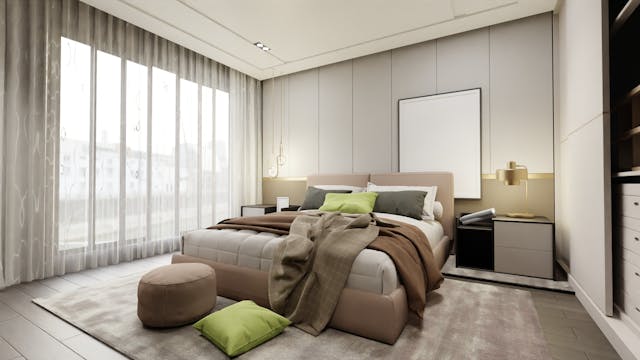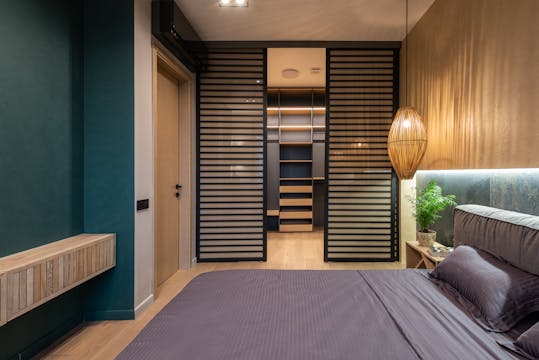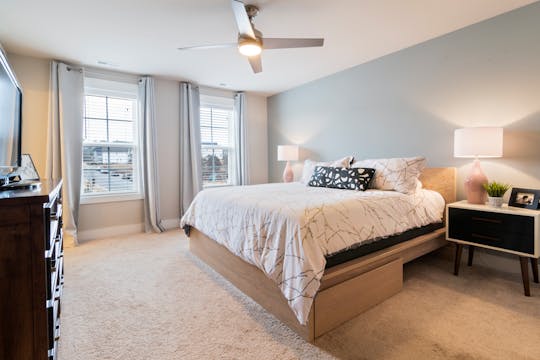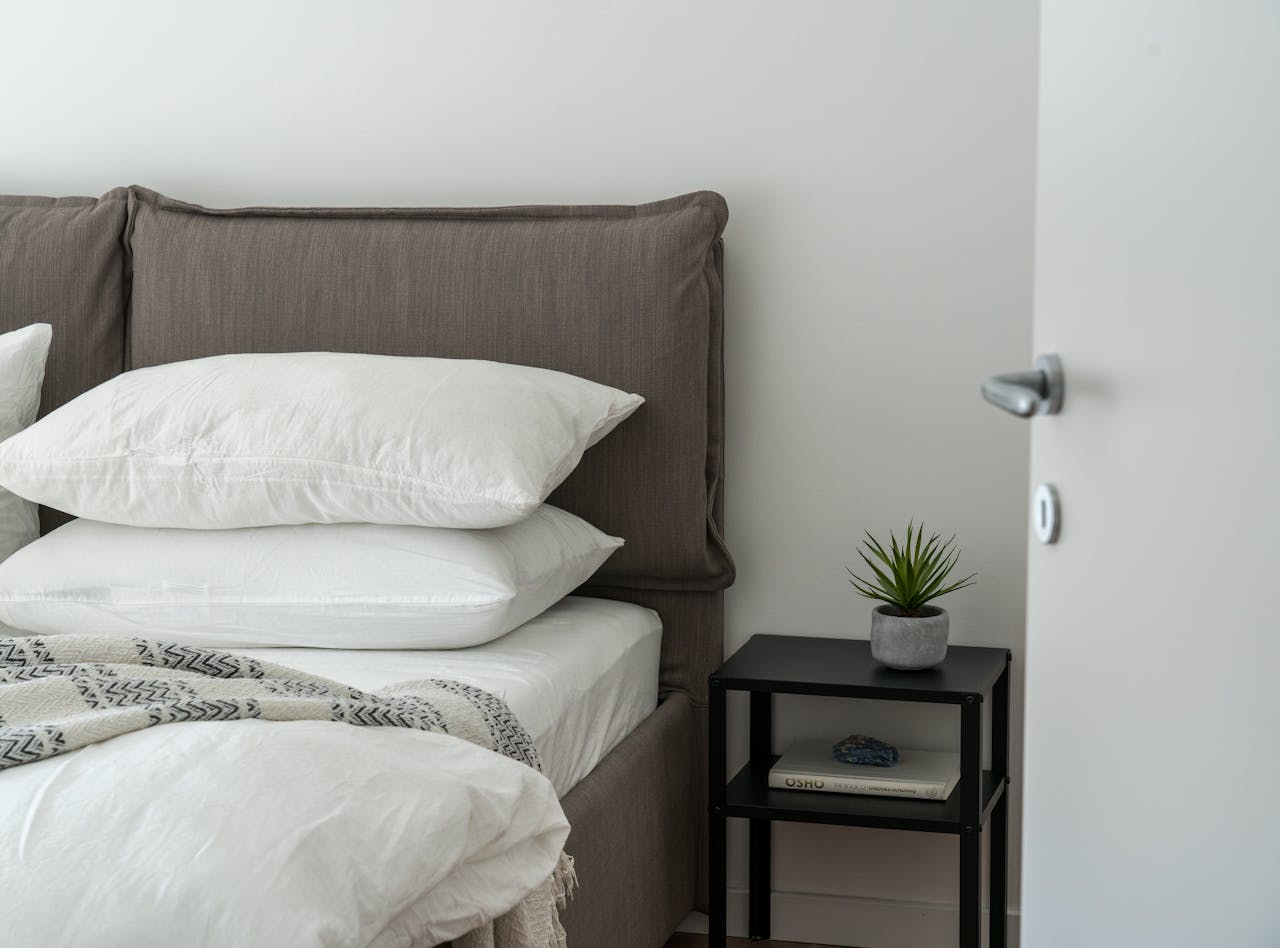Creating a guest room that is disability-friendly involves thoughtful consideration of accessibility and comfort for all potential guests.
Whether you are running a hotel or simply want to accommodate friends and family in your home, ensuring that your guest room meets the needs of those with disabilities is both respectful and welcoming.
Properly equipped rooms not only provide independence for guests with disabilities but also convey a strong message of inclusivity.
When designing or revamping your guest spaces, begin by evaluating the physical layout of the room.
This includes door widths, the height of beds and furniture, and the clear floor space available for maneuverability.
For guests in wheelchairs or with mobility impairments, these are critical factors that directly impact the usability of the room.
An accessible hotel room must have ample space to allow smooth and safe navigation, as well as transferring to and from mobility devices.
Beyond the basics of spatial design, focusing on the details can make a considerable difference.
Features like grab bars in the bathroom, lower peepholes in doors, and disabled bath aids can significantly enhance the comfort level of your guest room.
Contemplate the inclusion of adaptive technologies, such as visual alarm devices for guests with hearing impairments or adjustable lighting for those with visual disabilities.
Each of these elements plays a part in crafting an environment that is not just physically accessible but also welcoming and accommodating for all.

Understanding Accessibility Needs
Creating a guest room that is welcoming for people with disabilities involves knowledge of the relevant laws and an understanding of the various needs that guests may have.
Your approach should focus on practical and empathetic solutions that enhance comfort and accessibility.
Identification and Compliance
To accommodate guests with disabilities, you must first identify the requirements set by the Americans with Disabilities Act (ADA).
This act outlines the necessary adaptations for spaces to be accessible and usable by individuals with disabilities.
Ensure your guest room meets ADA requirements, such as clear floor space for wheelchairs, reachable controls and fixtures, and visual as well as audible alerts.
- Mobility: Consider the needs of individuals who use wheelchairs, walkers, or crutches. Ensure doorways are at least 32 inches wide and that there are no thresholds or steps that impede movement.
- Vision: Incorporate features for guests with low vision, such as ample lighting, contrasted colour schemes, and braille on signage.
- Hearing: Install visual alert systems for guests who are deaf or hard of hearing to signal events like a door knock or a ringing phone.
Facilities and Services for Disabilities
Provide facilities and services specifically aimed at guests with disabilities to ensure their stay is comfortable and safe.
- Wheelchairs and Assistive Devices: Ensure that your guest room has enough space to accommodate wheelchairs and other assistive devices. Provide ample turning radius and consider the placement of furniture to allow free movement.
- Service Animals: Understand that service dogs are not pets but essential support for many disabled guests. Make provisions for service animals, including a designated relief area and appropriate waste disposal options.
- Assistive Technology: Incorporate adaptive equipment and technology into your guest room, like hearing loops, screen readers, or tactile models for individuals with vision impairments.
- Disabled Bath Aids: Equip bathrooms with grab bars, a roll-in shower, and a shower seat to support guests who require stability in the bathroom.

Designing for Disability-Friendly Accommodations
Creating an accessible guest room is essential to ensure all guests, including those with disabilities, can rest and move about comfortably.
Attention to room layout and bathroom facilities is crucial to provide a seamless experience for everyone.
Room Layout and Furniture
Your room’s floor plan should accommodate wheelchair movement with at least a 36-inch wide clear path to all furniture and amenities.
Beds should be of an appropriate height (around 20 inches from the floor to the top of the mattress) to facilitate easy transfers from a wheelchair.
Consider installing adjustable beds to cater to various needs. Offer extra pillows to provide additional support if required.
Ensure that light switches, power outlets, and climate-control panels are no higher than 48 inches from the ground so they are within reach of a seated position.
Guests should have easy access to a telephone and remote controls from the bed.
Choose furniture with rounded edges to reduce injury risks, and secure rugs to the floor to prevent slippage.
Bathroom Accessibility
The bathroom should be spacious with a wheelchair-accessible roll-in shower equipped with grab bars.
If a bathtub is present, it should have a transfer seat and disabled bath aids to assist guests.
The sink must be at an accessible height with space underneath for guests using a wheelchair.
Install grab bars near the toilet and within the shower area.
Bathroom amenities, like towels and toiletries, should be within easy reach, not stored in high cabinets.
Non-slip mats are essential for safety, as well as an emergency call button in case assistance is needed.

Ensuring Accessible Services and Amenities
To ensure your guest room is truly welcoming for everyone, you need to provide services and amenities that cater to the unique needs of travellers with disabilities.
This includes considering how guests interact with various offerings, from room service to customer service.
Guest Services for Diverse Needs
Your commitment to accessibility should be evident in every service offered.
When providing communication options for your guests, implement a customer service protocol that includes staff trained in sign language and provide devices for text communication for guests with hearing impairments.
- Room Service: Ensure your room service menu is accessible with options such as braille, large print, or an audio version.
- Customer Service: Maintain a 24/7 customer support line with staff trained to assist travellers with disabilities.
Accessible Food and Dining Options
Your dining services should accommodate all guests, including those with dietary restrictions or physical challenges.
- Room Service Menu: Offer a range of meals suitable for guests with specific dietary requirements, clearly listing ingredients.
- Restaurant: Design the restaurant layout to be navigable for those using wheelchairs or disabled bath aids, ensuring tables are spaced appropriately.
Facilitating Accessible Travel and Reservations
When booking a trip, ensuring accessibility for guests with disabilities throughout their travel is critical.
This includes a streamlined reservation process and suitable transportation and parking.
Transportation and Parking Provisions
Parking: Make certain your establishment provides designated parking spaces for travellers with disabilities.
These spots should be conveniently situated near the entrance, with ample room for van accessibility.
Transportation: If your business provides shuttle services, include wheelchair-accessible vehicles. Provide information on local transportation services that accommodate travellers with disabilities.
Streamlining Reservation Processes
Accessible Room Availability: Clearly list the availability of accessible rooms during the reservation process. Mention features like wider doorways, grab bars, and disabled bath aids to promote informed decision-making.
Reservation Assistance: Offer direct assistance via phone or chat for travellers with disabilities to make reservations. This ensures any specific needs are addressed efficiently.
Confirmation and Policies: Send a detailed confirmation, including accessibility features and reservation details. Also, provide a clear outline of cancellation policies for added peace of mind.



